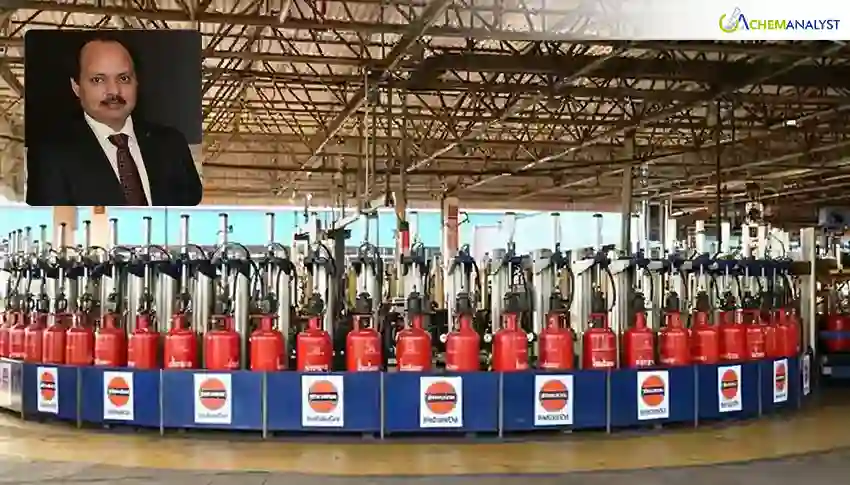Welcome To ChemAnalyst

As India strides towards energy transition and digital infrastructure across industries, the LPG sector too is witnessing a transformative shift. In an exclusive Interview, Sunil Kumar Prasad, General Manager of LPG Operations and Marketing at Indian Oil Corporation Ltd. (IOCL), shared key insights into the current landscape and future direction of the LPG industry in India.
Q: How do you see the role of manpower management changing in the future for LPG bottling plants, considering the increasing automation?
A: Any efficient system must remain lean. Routine work will increasingly rely on contractual manpower, while a smaller team of technically sound professionals will be essential to run advanced automated systems. Retaining skilled technical staff will be one of the most challenging tasks for HR in the future. Safety and maintenance must remain the focus areas, even as teams are downsized. Repositioning staff across roles will help optimize operational costs without compromising efficiency.
Q: How do geopolitical events and fluctuations in global crude oil prices impact plant operations, particularly in terms of supply and distribution logistics?
A: LPG pricing in India is largely controlled by the government, so crude oil price movements have a limited direct impact on plant operations. Sourcing is typically secured through long-term contracts—whether from imports or refineries—which reduces volatility. While price changes affect both PSU and private operators, long-term supply agreements provide stability and mitigate uncertainties in distribution.
Q: In your opinion, what is the single most significant factor in the current geopolitical landscape that influences LPG prices in India, and how could a consumer best mitigate its impact?
A: Consumers themselves have limited scope to mitigate LPG price fluctuations. A more transparent approach would be to link consumer pricing directly with crude oil prices, ensuring that both upward and downward movements are fairly passed on. Additionally, primary logistics costs are a key factor. Commissioning pipelines such as the Kandla-Gorakhpur LPG Pipeline (KGPL), which will connect 22 bottling plants across India, will substantially reduce transportation costs, improve safety, and bring long-term reliability to the system.
Q: Given that India imports a significant amount of its LPG, how do you think government policies and subsidies have affected the demand-supply chain and pricing at the local level?
A: Since LPG pricing is almost fully regulated by the government, there is little control left to individual operators. At the local level, pricing variations largely depend on the source of LPG and the margins available to distributors. Subsidies, while ensuring affordability, also shape demand trends and influence supply chain dynamics across regions.
Q: What technological innovations in the last decade have had the most profound impact on the efficiency and safety of LPG bottling plants?
A: Below listed are the technological innovations that had significant impact on the efficiency and safety of LPG bottling plants:
• Plants today require only about 35 acres, compared to 90–110 acres earlier, making projects more viable.
• Mounded storages have enhanced safety while reducing space requirements.
• Automated carousels have significantly boosted productivity, reaching up to 1,600 cylinders per hour.
• Technologies like VCWE (Valve Change Without Evacuation), ORM (O-ring Removal Machine), and vision readers for tare weight have improved safety and accuracy.
• Auto-dip posting has ensured precise stock accounting and reduced theft.
• Variable Frequency Drives (VFDs) in compressors and pumps have cut electricity costs.
These advancements have transformed LPG bottling into a safer, more efficient, and cost-effective operation.
Q: What role do you see LPG playing in India's energy transition, particularly in competition with other cleaner fuels?
A: LPG will continue to grow in rural areas, where it provides a cleaner alternative and helps reduce pollution. Today, LPG penetration has reached over 95% of India’s population. In urban areas, however, PNG (Piped Natural Gas) and electricity are expected to grow faster, which may lead to some decline in LPG consumption. Nevertheless, the rural market expansion will balance out this shift, keeping LPG relevant in India’s energy mix.
Q: Looking ahead, what do you believe is the single biggest opportunity and the single biggest challenge for the LPG industry in India over the next 15–20 years?
A:
• Biggest challenge: Limited growth potential in urban markets due to competition from PNG and electricity, coupled with the difficulties of tapping rural markets effectively.
• Biggest opportunity: Expanding LPG’s reach in rural areas through initiatives like lighter composite cylinders, which are easier to handle and reduce manpower needs. Greater automation in handling cylinders and innovations in last-mile delivery can also help compensate for market share loss in urban areas. Successfully addressing rural distribution challenges will be the key to sustaining long-term growth.
We use cookies to deliver the best possible experience on our website. To learn more, visit our Privacy Policy. By continuing to use this site or by closing this box, you consent to our use of cookies. More info.
